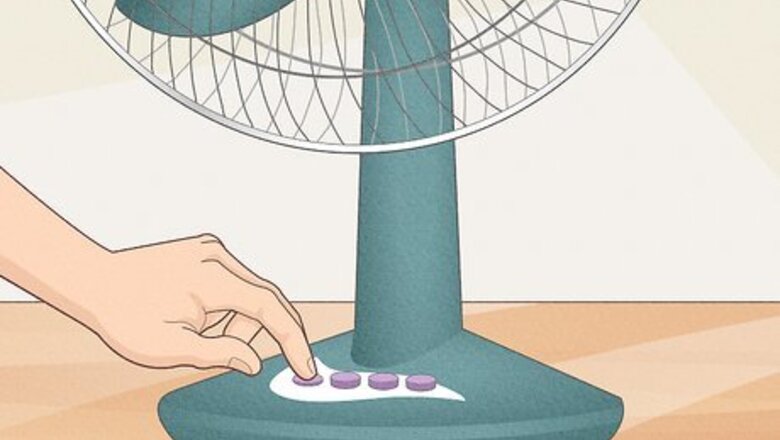
views
Cleaning Oscillating and Window Fans Quickly
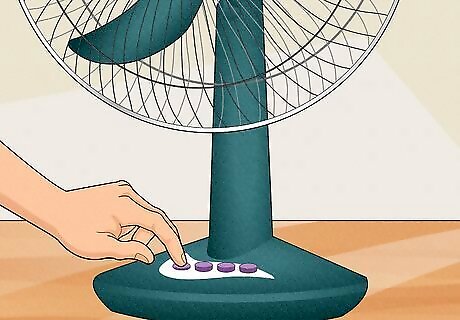
Turn the fan off. Flip the power switch on the fan or unplug it from the wall. Ensure that the blades have come to a complete stop before you clean the fan. On most oscillating fans, the power button is on the base or top of the fan. Most window fans will need to be unplugged.
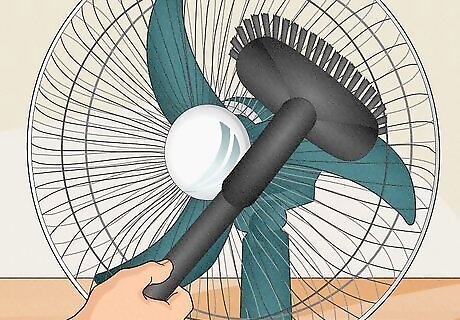
Vacuum the grill of the fan. Attach the brush attachment to the end of the vacuum hose and turn the vacuum on. Slide the vacuum hose over the grill of the fan to pick up dust and dirt that has accumulated. Clean the grill from the top to bottom.
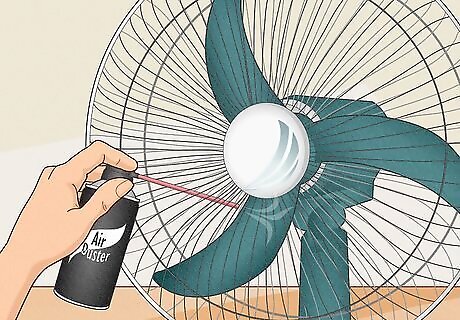
Spray compressed air on the blades of the fan. Buy a can of compressed air online or at a department store. Thread the straw through the grill and press the trigger on the can to expel air from the straw. Blast air on each blade of the fan until they are free of dust. Hold the compressed air can right side up when spraying it.
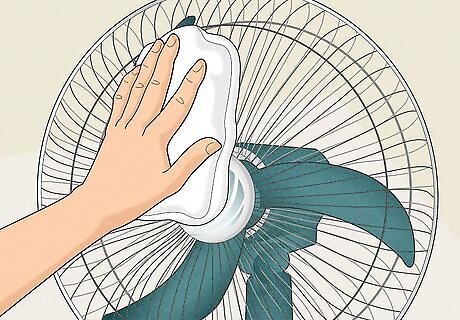
Wipe down the fan with a microfiber cloth. Start from the top of the fan and work your way down, wiping in a back-and-forth motion. Wipe down the grill, base, and back of the fan. Perform this process once a week to maintain a clean fan. You can purchase a microfiber cloth online or department store.
Deep Cleaning Oscillating and Window Fans
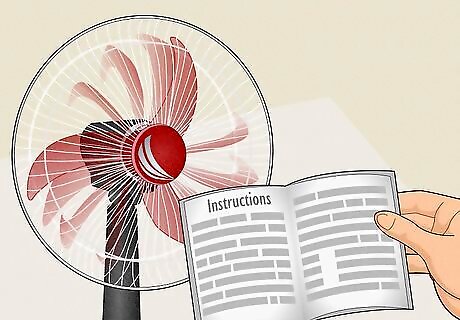
Read the manufacturer's instructions before taking the fan apart. The fan may have come with a user manual that includes instructions on how to take it apart. Read the directions thoroughly so that you don’t accidentally break the fan when taking it apart. If you lost the manual that came with the fan, you can usually find instructions on the manufacturer’s website.
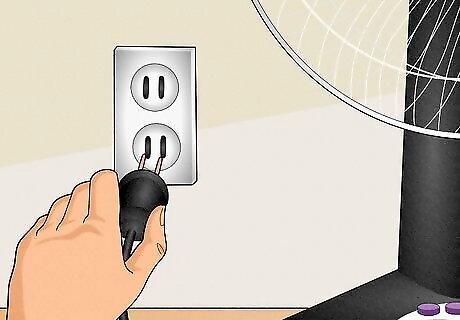
Unplug the fan from the power source. Completely detach the power cord from the fan if you can. Ensure that all the blades of the fan have completely stopped moving before you start cleaning.
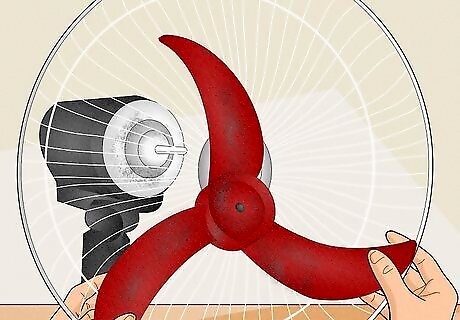
Remove the grill from the fan. Unclip the tabs around the fan, if it has them. On some fans, this will allow you to remove the grill. If the grill doesn’t come off, check for screws on the front of the fan. Unscrew the screws in the face of the fan to remove the grill. Set the screws aside in a safe place so you can screw them back in later. Some fans will have a grill on the back and front of the fan. In this case, remove both grills.
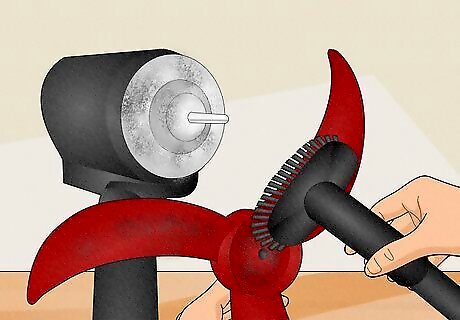
Vacuum the blades and interior of the fan. Use the hose attachment on an upright vacuum or use a hand vacuum to suck up the dirt and dust inside of the fan. Concentrate on areas that have built-up dirt like the blades and crevices in the fan mechanism. The brush attachment may make using the hose attachment easier.

Wipe down the blades with a spray cleaner and paper towels. Buy a glass or hard surface cleaner for the blades. Spray the cleaner directly into the paper towels so that you don’t get any liquid in the motor of the fan. Work in a side-to-side motion and remove all the dust and surface dirt from the surface of the blades.
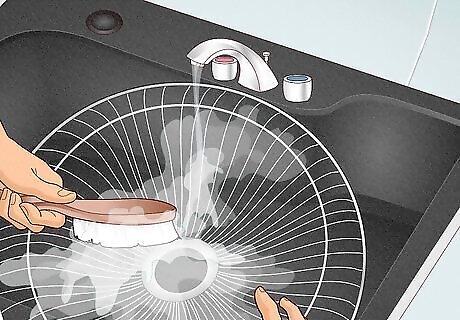
Scrub the grill in a sink with soap and water. Place the grill in a sink and turn on the faucet. Use a brush or sponge and a mild dish soap to scrub down the grill. Work back and forth over each piece of the grill until it’s clean. Since the grill in the fan can get very dirty, it’s best if you don’t use the sponge that you use to clean dishes.
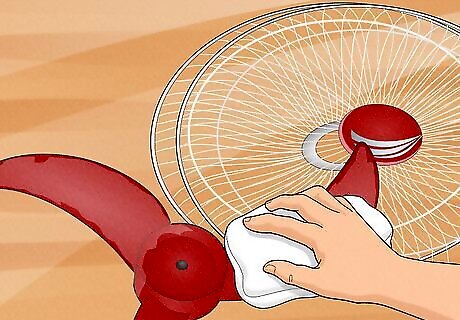
Let the fan dry, then reassemble it. Wipe down the grill and blades of the fan with a dry rag or paper towels or let it air dry for 10-15 minutes. Once everything is dry, screw the grill back onto the fan and close the clips, if you have them. Plug the fan in to make sure that it works properly.
Cleaning Ceiling Fans
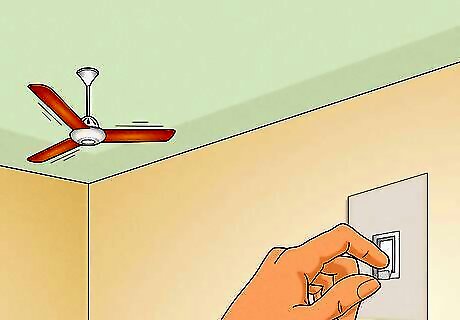
Turn off the fan. Flip the switch on the wall to turn off the fan. Wait for the blades to stop moving before you dust or clean the fan.
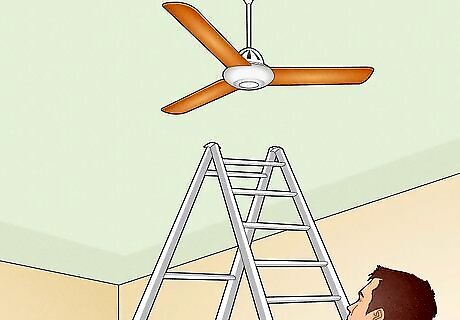
Position a step ladder under the fan so that you can reach it. Open a step ladder under the fan and make sure that it's secure on the ground. Step up on the ladder and make sure that you can reach it. If you can't reach the ladder, you'll need a taller ladder.
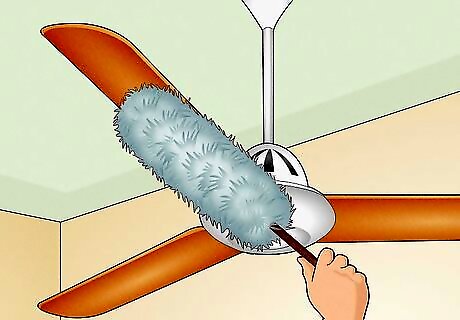
Dust the blades. Move a duster back and forth over the blades and fan mechanism. If you don't have a duster, you can wipe down the blades and mechanism with a dry rag. Regular dusting will prevent you from having to do a deeper cleaning as often. Dust ceiling fans at least once a week to maintain them. You can also use an extension duster to reach the blades.
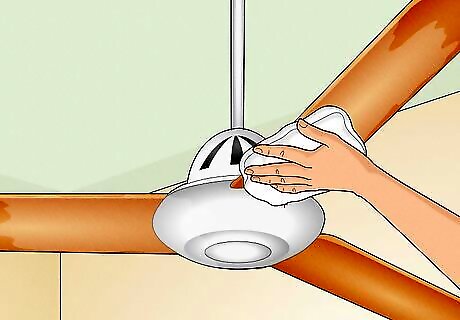
Wipe down the blades with a damp microfiber cloth. Dampen a microfiber cloth under your facet. Wring out the cloth, then wipe the top, bottom, and sides of the fan blades. Don’t use abrasive chemicals to clean ceiling fans because it could scratch or discolor the blades.
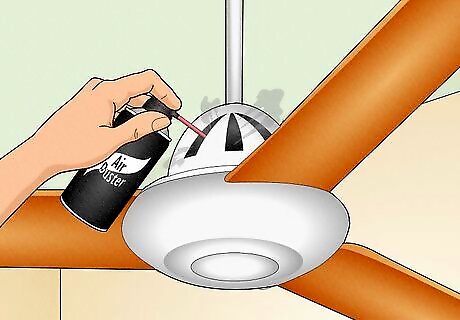
Spray compressed air in the motor to clean it. Point the straw of compressed air in the crevices of the motor. Press the trigger on the top of the can to dispel any dust or dirt that might have built up inside of the motor. Don't hold the canned air upside down.


















Comments
0 comment